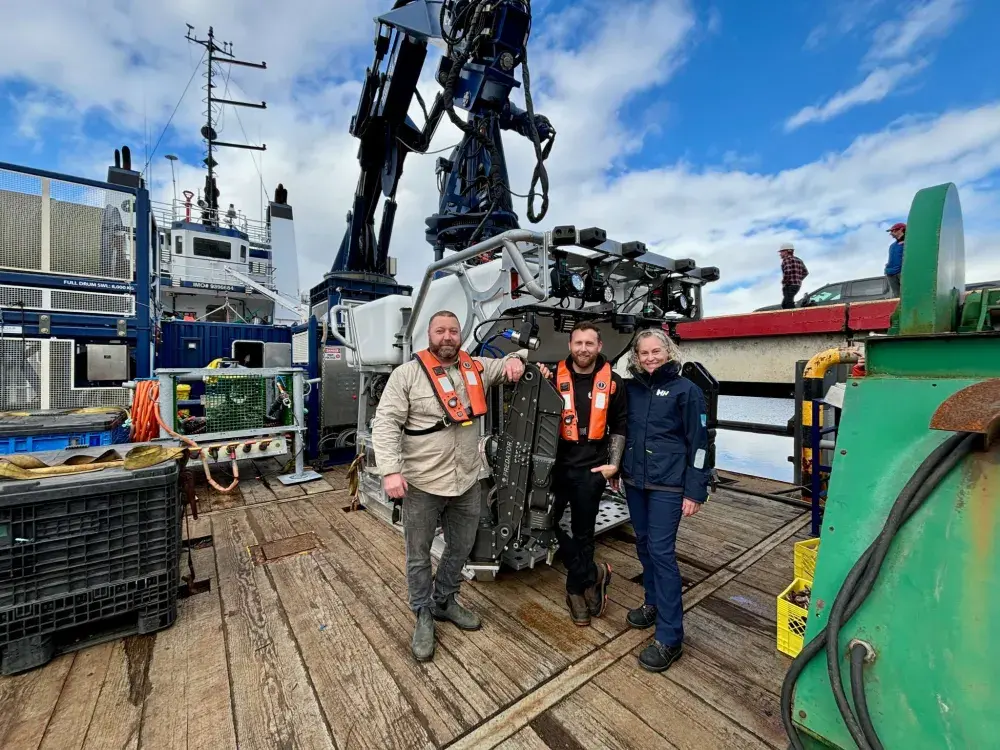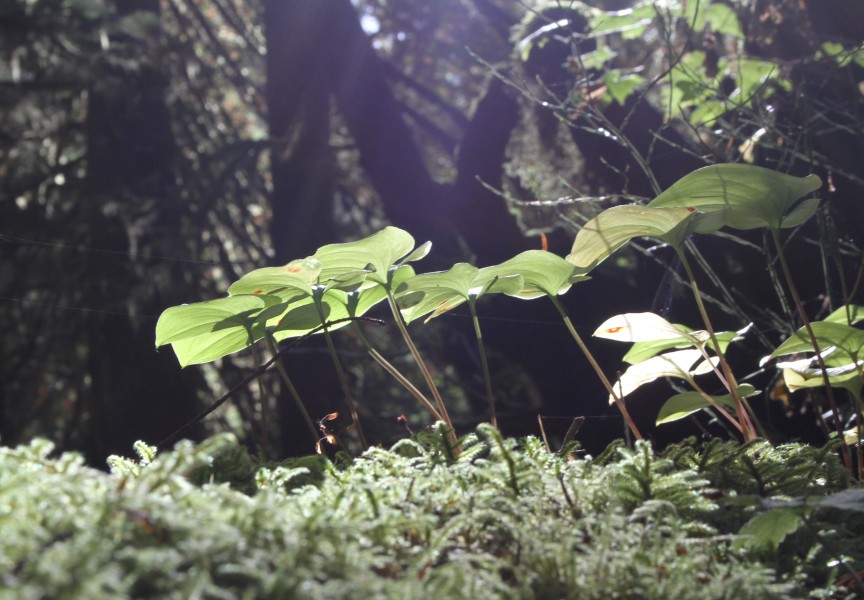Plunging down into the abyss of the Pacific Ocean along the west coast of Vancouver Island, B.C., a deep-sea droid dubbed ‘Jenny’ embarked on its first major expedition this fall with Ocean Networks Canada (ONC) and Canpac Marine Services Inc.
Jenny, a roughly $8 million remotely operated vehicle (ROV) capable of reaching depths of 6,000 metres, is off completing key maintenance tasks on ONC’s offshore subsea 800-kilometre-long cabled observatory infrastructure from Oct. 5 to 12.
Canpac Marine president Ryan Anderson says after years of talking about building a deep-sea droid, it took one year to design and one year to build the robot.
“There are only a couple in the world that can work at those depths,” said Anderson, noting that Jenny is about the size of a small VW hippie van. “It’s great to finally get out for sea trials and see her in action.”
During the eight-day expedition aboard the Canpac Valour, the new ROV will swap out old instruments for fresh ones at three main sites along ONC’s observatory NEPTUNE (North-East Pacific Time-series Undersea Networked Experiments), a data collection loop that starts and ends at Port Alberni’s shore station.
Meghan Paulson, ONC executive director of observatory operations, says NEPTUNE has five nodes used for powering communications.
“Because it’s cabled and powered, we are able to collect data in near real time and keep the instruments powered for years on end. If you think about instruments working at the bottom of the ocean, think of them as computers, sometimes they stop working,” said Paulson.
Jenny can do “very complex tasks that need high dexterity”, according to Josh Tetarenko, Canpac’s director of ROV operations who controls the two arms on the ROV with miniature versions on the ship’s control centre.
“When we move these around, the arm on the sub moves exactly where we move,” he said.
Depending on sea conditions, the droid will also collect up to 12-hours per day of video footage from 11 high resolution cameras and 300,000 lumens of light.
“It’s all basically 4K quality and the zoom capabilities are incredible. It has a lot of functionality,” said Tetarenko, who is an electrician by trade and has been working with ROVs for the past 15 years.
Paulson and Tetarenko went on to add that deep-sea ROVs have a whole suite of sampling capabilities, from shipwreck observation and recovery to marine debris collection and species monitoring.
“It really opens up a whole world for any number of scientific expeditions that are wanting to explore in the deep ocean,” said Paulson. “The more we understand about the ocean the more we can protect it; change how we are living and influence policy to make big decisions, particularly on things like the climate-change front.”
Tetarenko said ROVs have been used to transect a specific line on the sea floor over many years.
“That video gets handed over to scientists to review and count the sea life and biology in it. We’re actually starting to use machine algorithms to do fish counting for us, so grad students don’t have to sit and watch the video for hours at a time,” Tetarenko said.
In addition to being rated to work up to 6,000-metres deep, Tetarenko adds that the droid is built with a 7,000-metre long umbilical cord capable of lifting 3,000-kilogram objects.
“The inside is made of Kevlar around the conductors we need to power the ROV, which are extremely high voltage, outside looks like a wire roped, armoured around,” he said.
For this fall sea trial, Jenny will be working in a range of water depths, 2,500-metres being the deepest and 100-metres (close to the coast at Folger Passage Node) at the shallowest, says Paulson.
Since stepping into her leadership role with ONC four and a half years ago, Paulson says some of the earthquake data they’ve collected has made her sit up and take notice.
“We have a whole network of seismometers and accelerometers on our NEPTUNE observatory. We are in a seismically active area. I’m not from this coast, but I was surprised at the frequency of earthquakes that happen here from the low magnitude,” she said.
Activity is particularly notable around the Endeavour site, which is located 200 nautical miles offshore from the west coast of Vancouver Island.
“In one area, in the Endeavour area, it’s at a spreading center where continental plates are moving away from each other, that activity has certainly increased over the past two and a half years,” Paulson continued.
Coastal First Nations and Fisheries and Oceans Canada (DFO) recently protected 133,017 square kilometres of deep sea territory located off the southern tip of Haida Gwaii. The Tang.ɢwan-ḥačxʷiqak-Tsig̱is Marine Protected Area (MPA) is home to extraordinary seafloor features, including more than 47 underwater mountains, known as seamounts, and all confirmed hydrothermal vents in Canada. It is now the largest MPA designated under Canada’s Oceans Act.
Tetarenko says they hope to work with DFO next summer to do more seamount research and emphasized that the impacts the ROV has on any biology is “extremely minimal”.
“We try to make sure the ROV doesn’t touch the seafloor when possible. We put a lot of effort to make sure we don’t leave any debris or any oil,” said Tetarenko.
The fall expedition is being broadcast live at: https://www.oceannetworks.ca/expeditions/oncabyss-expedition-fall-2024/







